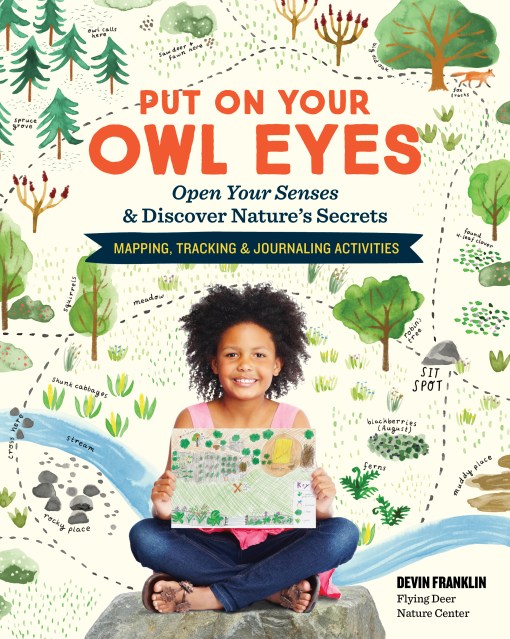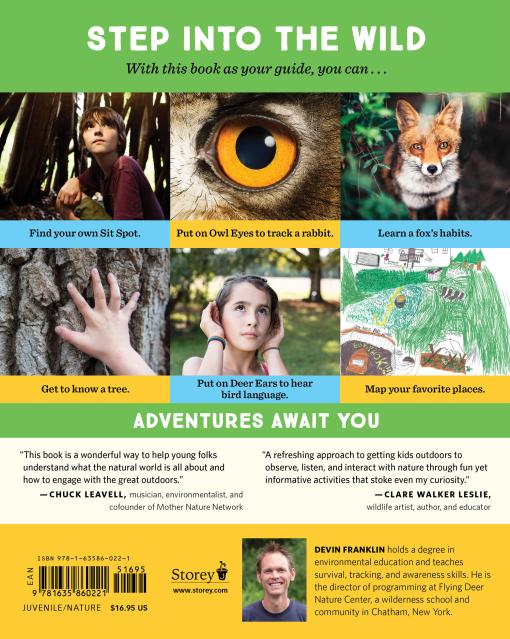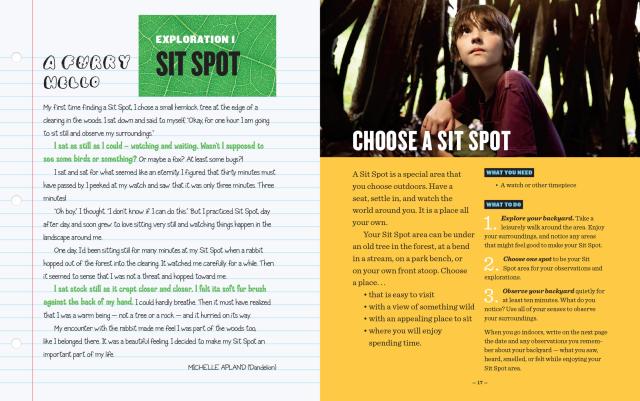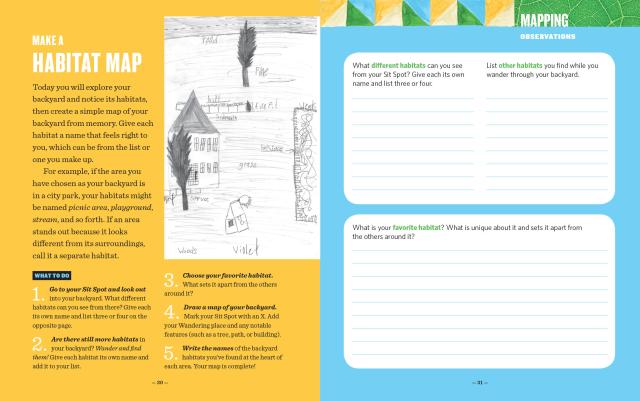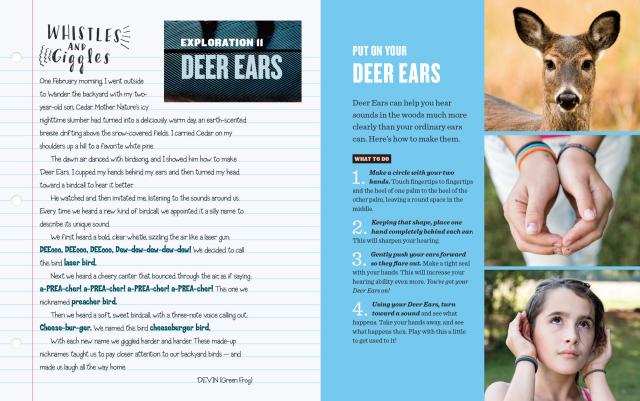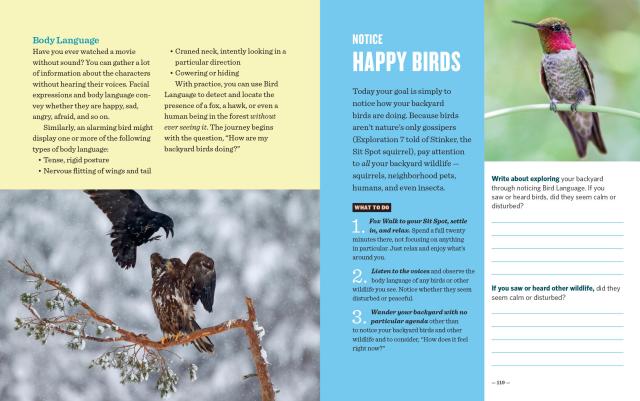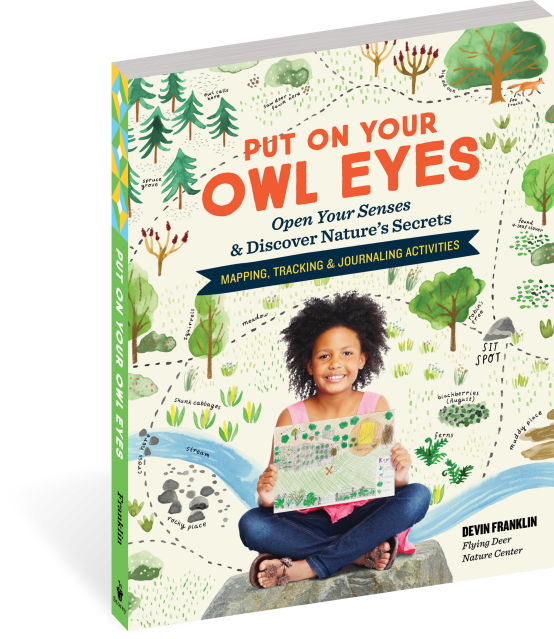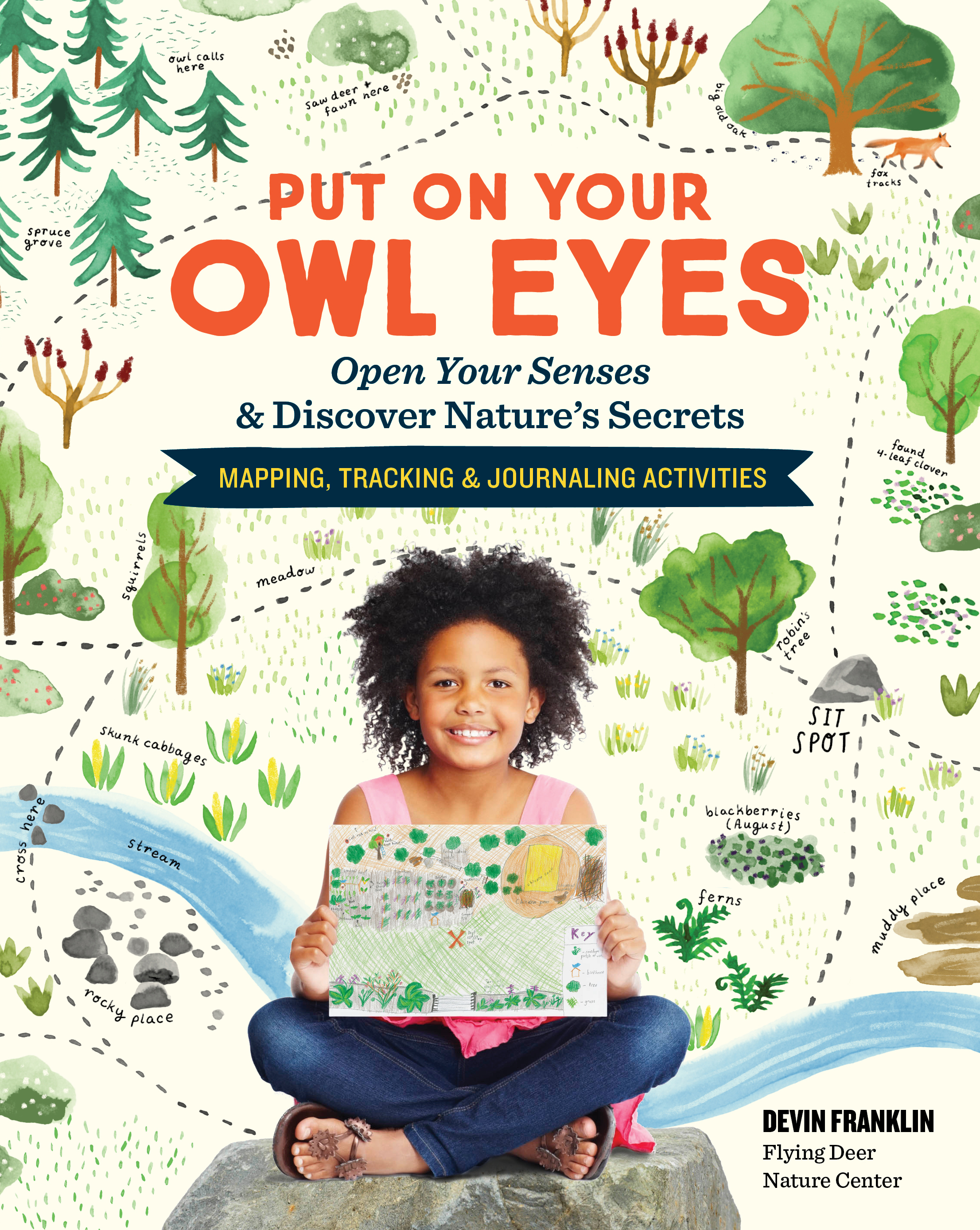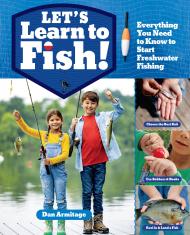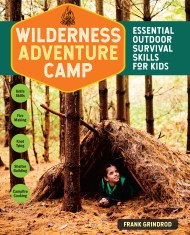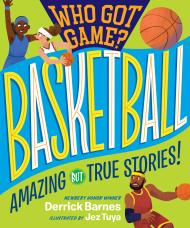Promotion
Use code MOM24 for 20% off site wide + free shipping over $45
Put On Your Owl Eyes
Open Your Senses & Discover Nature’s Secrets; Mapping, Tracking & Journaling Activities
Contributors
Formats and Prices
Price
$16.95Price
$22.95 CADFormat
Format:
- Trade Paperback $16.95 $22.95 CAD
- ebook $11.99 $15.99 CAD
This item is a preorder. Your payment method will be charged immediately, and the product is expected to ship on or around May 28, 2019. This date is subject to change due to shipping delays beyond our control.
Also available from:
Children will see the natural world around them with brand new eyes, as they learn to follow its signs, hear its language, and understand its secrets. With this unique and compelling book written by expert environmental educator Devin Franklin, kids aged 8 to 13 will build their own relationship with nature through finding a “Sit Spot” — an outdoor space in the backyard, in a field or in the woods, in a vacant lot or a city park — where they can stop, observe, and become familiar with the flora and fauna that live there.
From the Six Arts of Tracking (Who, What, Where, When, Why, and How) and making a habitat map to walking in smooth silence like a fox and learning the basics of bird language, exploration exercises lead young readers on a fascinating journey of discovery as they watch, listen, map, interpret, and write about the sounds, sights, scents, and patterns they encounter. With prompts and write-in spaces for journaling, map-making activities, and observational tracking throughout, Put On Your Owl Eyes is an interactive and thought-provoking guidebook.
From the Six Arts of Tracking (Who, What, Where, When, Why, and How) and making a habitat map to walking in smooth silence like a fox and learning the basics of bird language, exploration exercises lead young readers on a fascinating journey of discovery as they watch, listen, map, interpret, and write about the sounds, sights, scents, and patterns they encounter. With prompts and write-in spaces for journaling, map-making activities, and observational tracking throughout, Put On Your Owl Eyes is an interactive and thought-provoking guidebook.
Genre:
-
“Devin Franklin’s wonderful book helps young folks to better understand what the natural world is all about. Easy and fun to navigate, it is an excellent way to encourage our youth to put down those screens and engage with the great outdoors.” — Chuck Leavell, musician, environmentalist, and cofounder of Mother Nature Network www.mnn.com
“A refreshing approach to getting kids outdoors observing, listening, interacting with nature through fun yet informative activities that stoke even my curiosity.” — Clare Walker Leslie, wildlife artist, author, and educator
“Put On Your Owl Eyes is an invaluable resource for using the outdoors to transform and inspire. Mr. Franklin provides young readers with questions and insights that help them sharpen their senses and encourage them to explore their surroundings, opening their eyes to the beauty around them and providing positive exposure to the outdoors.” — David Hartness, director of FLOC Outdoor Education Center
“Put On Your Owl Eyes is a great resource for helping children connect with nature! Devin presents outdoor activities that will inspire kids to discover deeper connections with the plants and animals of their backyard and local parks.” — Jason Knight, director, Alderleaf Wilderness College
- On Sale
- May 28, 2019
- Page Count
- 160 pages
- Publisher
- Storey
- ISBN-13
- 9781635860221
Newsletter Signup
By clicking ‘Sign Up,’ I acknowledge that I have read and agree to Hachette Book Group’s Privacy Policy and Terms of Use
